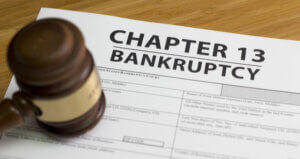Do you need to file for bankruptcy? Is it your first time? Learn how to file for bankruptcy as a first timer. Get the process right.

You will need to file some paperwork with the court and pay fees before your case moves forward.
This blog post focuses on how to file for bankruptcy, using a step-by-step process that makes it easier on you.
How to File for Bankruptcy, Step by Step
Step #1: Gather the Necessary Documents
The first step when filing for bankruptcy is gathering all the necessary paperwork.
You will need to file a petition, an application for authorization, and a statement of your current monthly income with your local bankruptcy court.
Additionally, you must file a notice of case conference that describes when your creditors’ meeting will be held, at least seven days before it takes place.
Finally, within 14 days of filing these documents, everyone who holds debt against you must receive official notification from the trustee (by mail) concerning what has happened regarding your case so far.
This means they also get a notice about how their debts might change or disappear because of this action taken against them on behalf of the debtor (you).
Step #2: Complete the Required Credit Counseling Course
The next step in filing for bankruptcy is completing a required credit counseling course.
This counselor will tell you what your rights and responsibilities are while going through the bankruptcy process, as well as discuss alternatives to bankruptcy.
You should file this certificate with the court after receiving it from the agency that provided these services to you within 30 days of starting your case.
Step #3: Consider Chapter 7 or Chapter 11 Bankruptcy
The next step in filing for bankruptcy is deciding whether you file under chapter 7 or 11. Chapter 7 bankruptcy is the standard solution for personal debts.
Chapter 11 bankruptcy, also called “reorganization”, deals with businesses and individuals who have debts of $11 million dollars or more.
However, Chapter 13 bankruptcy allows a debtor to file a plan that reorganizes their debt over time according to the terms laid out by this plan.
Then, once approved by the court, creditors must stop acting against them until it’s finished being repaid through your repayment schedule as outlined in this agreement.
Step #4: Determine Your Filing Fee
The next step in filing for bankruptcy is determining your filing fee.
In Chapter 13 Bankruptcy, the chapter you file under determines whether you will be charged a filing fee when submitting paperwork with the court.
Chapter 7 filings cost $306 while Chapter 13 costs $281, if you make less than 150% of federal poverty guidelines.
Step #5: Print All of Your Bankruptcy Forms
The next step in filing for bankruptcy is printing all your bankruptcy forms.
You will file these documents with the court after completing each section and signing it, as well as including any attachments that go along with them.
After you file for bankruptcy, you need to meet with a trustee who can help explain what’s going on during this process.
In most cases, this person won’t be able to give legal advice or may not even know anything about how things work outside of their office due to confidentiality rules.
Step #6: Attend the Required Debtor Education Course
The next step in filing for bankruptcy is attending the required debtor education course.
In most cases, you will file this certificate with the court after receiving it from the agency that provided these services, within 30 days of starting your case.
This class gives potential debtors alternatives to bankruptcy and informs them of their rights during a process like this one.
It also discusses how creditors can take legal action against them if they don’t follow through on repayment plans given by courts or agreements made between parties involved in insolvency proceedings.
Step #7: Attend Your Meeting with Your Creditors (341 Meeting)
The next step in filing for bankruptcy is attending your meeting with creditors.
This will take place within 30 days of filing or earlier if you file a waiver giving up this right to file early due to extenuating circumstances outside of your control.
At this point, the trustee assigned to help guide you through the process should be well versed enough about what’s going on.
This way, they can answer questions before and after the bankruptcy takes place.
Step #8: Settle Your Existing Debts Outside of Bankruptcy
Next, you need to settle your existing debts outside of bankruptcy.
If you file under Chapter 7, this process will be much different than if you file under Chapter 11.
For example, creditors can accept reduced payment plans or lump sum settlements when dealing with individuals so long as they file the necessary paperwork to complete these agreements.
This is after verifying their identities and repaying any money collected illegally by way of fraud before starting proceedings like these.
Once approved though, all other contracts signed must follow the terms laid out in this repayment plan until it’s finished being repaid through whatever means agreed upon
These terms will be made during negotiations between parties involved.
Is it Worth it to File for Bankruptcy?
Most people file for bankruptcy because they can’t afford to repay debts given their current financial situation and lack of income, compared to outstanding balances owed by them.
Bankruptcy isn’t a quick solution. It may take years to reach a resolution. But, if you cannot repay your debts by any means, it may just be the suitable route.
Interested in More Bankruptcy Information?
As you can see, it’s not always simple to file for bankruptcy. If you need help with this process, contact the bankruptcy attorneys at Husker Law today at 402-415-2525 to speak to a member of our team.





